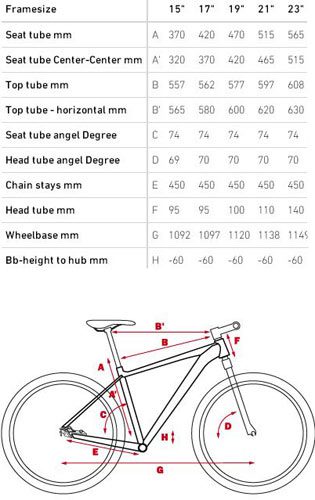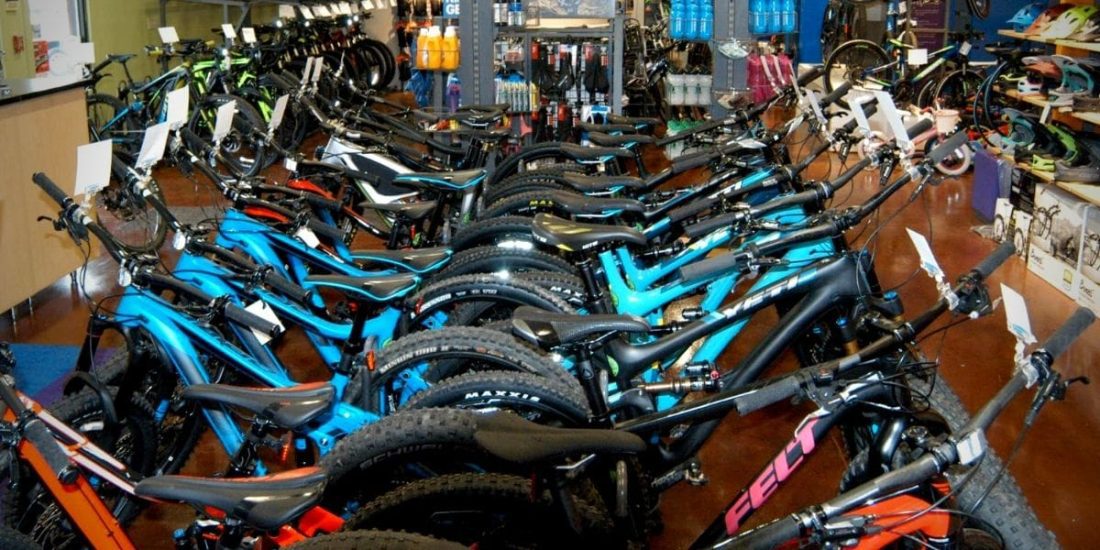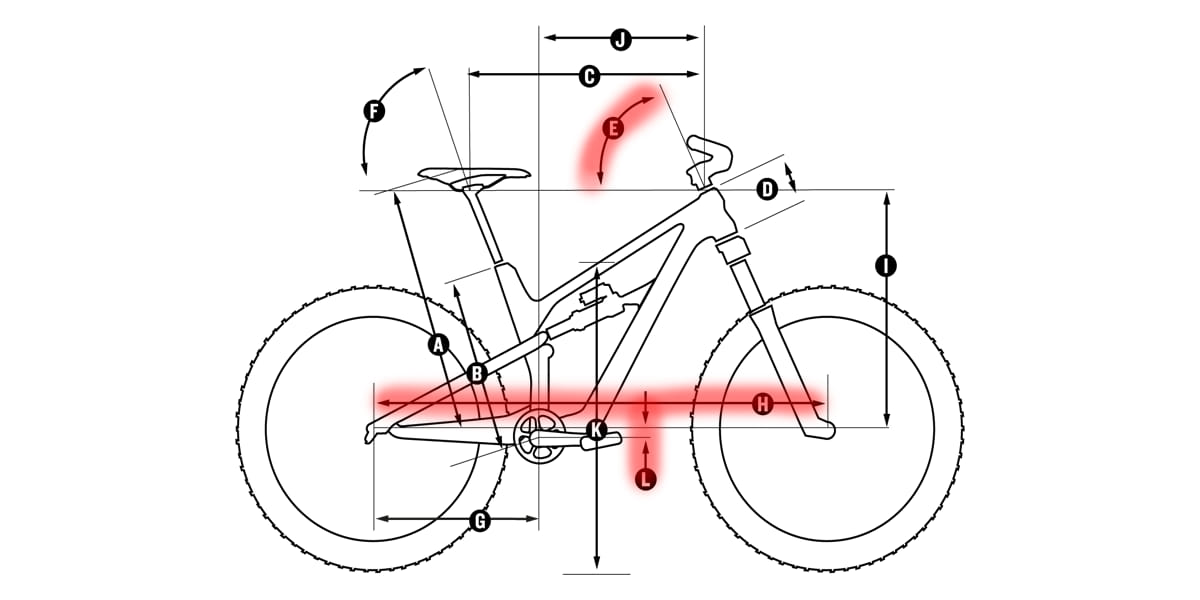
Choosing the Right Geometry for the MTB Frame
Content
In this technical article on the geometry of mountain bikes, we have covered all the episodes of "C'est pas sorcier" to be as clear and educational as Jamie. You can let us know in the comments at the end of the article if we have completed our mission!
Looking for a new ATV?
Head to your favorite store for a try.
Yes, we do encourage you to try a few brands until you find yours – well, for now, because your tastes, your practice, and your morphology change over the years.
So we said, you try some mountain bikes. Same size, same type of mountain bike, but you don’t feel the same, you don’t feel so comfortable on all of them.
The reason? Bicycle geometry.

What is Mountain Bike Geometry for?
The ATV consists of three main parts:
- frame ;
- fork ;
- wheels.
(After adding saddle, handlebars, pedals, it's a matter of comfort and practicality.)
In the meantime, everyone is watching? Okay, let's continue.
Well, the geometry of your quad is a combination of these three elements and everything that comes with them (tube length, angles, etc.).
The overall architecture of your bike (hence its geometry) influences many parameters and, in particular, your riding style.
While not the answer to all your ailments, geometry not adapted to your morphology can also cause mild discomfort, which becomes more and more annoying during long walks. It is possible to partially catch up with poorly adapted geometry (link to How to Choose the Right MTB Size and Adjust MTB to Avoid Knee Pain), but these settings will never replace an MTB perfect for your body type and your ride. style.
Understanding Mountain Bike Geometry
Mountain bike frame
We strive to reduce the size of the frame to the length of its top tube. In fact, it is the angle of the seat tube that determines the size of the frame.
Pay attention to three things:
- the horizontal distance between the crank axis and the fork axis (reach);
- the vertical distance between the crank axis and the fork axis (stack);
- the horizontal distance between the crank axis and the rear wheel axle (chain stays).

It is thanks to this data that you will adjust the stem and, therefore, determine your position on the bike.
Mountain bike frame and fork
Now let's take a look at the side of the fork and how it connects to the frame. Because, as with any recipe, it is not only the quality of the ingredients that matters, but also the way they are dispensed and mixed.
To understand mountain bike behavior, we'll also look at three data:
- the distance between the crank axis and the front wheel axis;
- the distance between the axle of the front wheel and the axle of the rear wheel (wheelbase);
- fork angle and fork offset (roller angle).

Roller angle for mountain bike stability
We're going to clarify this story about hunting coal a bit.
In fact, this will give you an idea of the ATV's resistance to changing direction and therefore the force you will have to apply to do so.
The smaller the steering angle and caster angle, the more stable the ATV, but the more difficult it is to change direction. Therefore, the cockpit must be responsive and powerful: then we will install a short stem and a wide handlebar.
Influence of mountain bike geometry on handling
Here we are, and you will understand why we had to do this little theory traversal.
What are you looking for to easily control an ATV? Stability and maneuverability are two elements that are, in fact, rather opposite. It's hard to have an ATV that is both extremely stable and very agile. This is physically impossible, and geometry explains this.
The more you increase the distances visible above, the more you increase the stability of the ATV. If you are looking for a highly manoeuvrable bike above all else, you will shorten those distances.
It's more specific, isn't it?
But it actually gets a little more complicated, because for different brands, reach, stack, wheelbase, tilt angle, etc. can vary significantly for an equivalent frame size (like M or L). Therefore, it is necessary to be careful with the choice of size and pay attention to the desired geometry. For almost equivalent geometry, for some grades it will be the letter M, and for others it will be L.
How do you know if you need more stability or agility?

It depends on your speed and the type of course you are following.
If you want to drive kilometers along a chain and travel at lightning speed, you will first of all strive for stability. On the other hand, at low speeds, we need an agile mountain bike.
Are you new to technical courses? Choose an ATV with a large wheelbase and a large steering angle. It will be stable at fast speed and maneuverable in hills or plains.
Conversely, do you love technical courses? The angle of the roller must be large to create resistance when changing direction. It sounds contradictory, but really not. When hunting hard, the pilot will work on his positioning and not on the steering lock. The wheelbase of your ATV should be relatively short in order to turn faster and easier.
It is in this latter category that we will find mountain bikes for players. These are older bikes that require a good technical level of driving because the rider has to work hard to place their center of gravity and lock the steering.
Manufacturers today are looking to standardize geometry in order to offer more versatile mountain bikes. The wheelbase is long enough and the chase is high for efficient bikes at fast speeds. A centered pilot position allows for less acrobatic piloting, but it requires good ground reading, good anticipation, and purposeful piloting.
Thanks to Philippe Teno, Distinguished Micromechanic Mountain Biker and Restaurateur of the famous Chalet Oudis in Les 7 Laux, for all the information!
